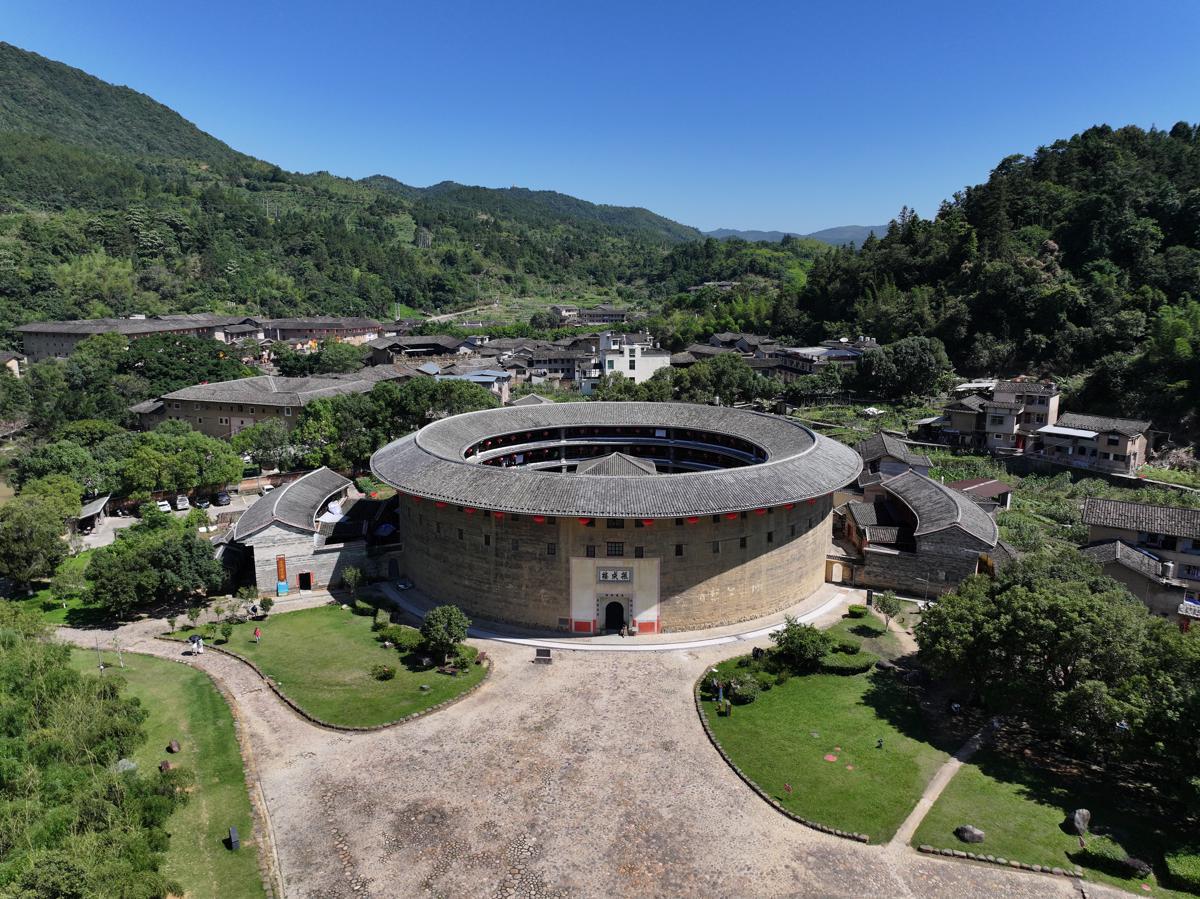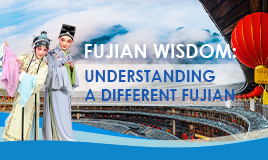Raised from earth
 A bird's-eye view of the Zhencheng Lou, listed as a World Heritage site. [Photo by Wu Yuliang / for chinadaily.com.cn]
A bird's-eye view of the Zhencheng Lou, listed as a World Heritage site. [Photo by Wu Yuliang / for chinadaily.com.cn]
In the rolling hills of Fujian province, the earthen Shengheng Lou, a tulou in Longyan's Yongding district — with nearly four centuries of history — got a rebirth. Once a massive communal residence, it has become a hotel.
Several fires had ravaged the structure and left it in a state of disrepair. But a significant investment of nearly 12 million yuan ($1.7 million) has transformed it into a modern boutique destination with 14 large suites. Last year, around 5,000 guests stayed in the unusual hotel.
The renovation of Shengheng Lou gave Lin Hui, who returned to her hometown, an opportunity to manage it. Born in 1986 within the walls of another tulou in Yongding, she understands the territory and the history. "I felt grateful to find a job near my home to further pursue my career and stay close to my aging parents," Lin said.
Tulou — the term translates literally as "earthen building" — typically have an earthen outer wall and an internal wooden frame. They are typically circular and resemble, from the outside, ancient Roman stadiums.
The tulou in Fujian were built by the Hakka people, a sub-group of the Han ethnic group that fled from the north to escape conflict in China's central plains centuries ago. The people eventually found refuge in the mountainous areas in southern China.
Thousands of tulou are scattered across the province, with Yongding being home to 1,768 of them.
"The greatest threat to the tulou is abandonment," Lin said. "The wooden frames are interconnected, and if one room deteriorates, it can easily lead to the collapse of adjacent rooms. Occupancy and regular maintenance are crucial to preserving the durability of these historic structures."
She recalled that, at the beginning of the renovation of Shengheng Lou, "the condition of the building was quite awful, except for the solid walls". The renovation addressed the building's traditional vulnerabilities such as water damage, and added modern amenities, including toilets. The bamboo and wood skeleton was reinforced with steel, ensuring structural firmness.
Converting the tulou into boutique hotels is just one of many initiatives in Yongding that aim to revitalize the ancient dwellings. A variety of other approaches, including homestays, immersive performance venues, traditional tea houses and folk art workshops, have also helped transform and preserve the old structures.
In Fujian, 46 tulou were listed as UNESCO World Heritage Sites in 2018, including 23 in Yongding.
Lin Shangkang, a 52-year-old resident of the World Heritage-listed Zhencheng Lou, often welcomes tourists at his doorstep.
"I never get tired of telling visitors about the history of this place — I enjoy it," Lin said with a sparkle in his eye. The four-story clay building was built a century ago by his great-grandfather's brothers. Today, the tulou houses 18 families — about 80 people.
Its fame was boosted when it was featured as the heroine's home in the Disney live-action movie Mulan, attracting young people to visit and experience the buildings and the history behind them.
Zeng Jieshan, a 16-year-old high school student from Shenzhen, Guangdong province, traveled four hours by train to experience the tulou firsthand. "I used to think ancient buildings were mostly temples or royal residences, like the Forbidden City," Zeng said. "But here in the tulou, people still live and thrive."




